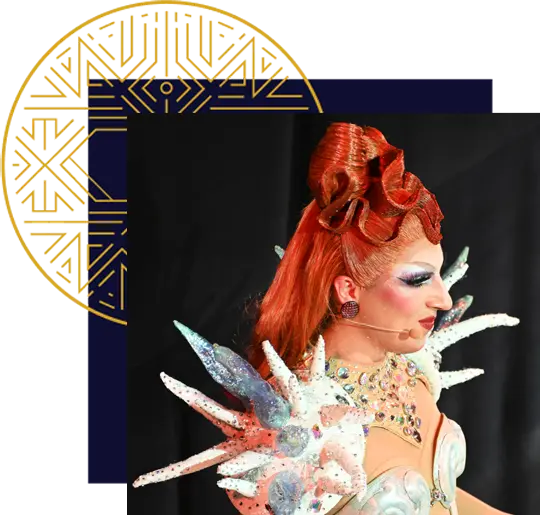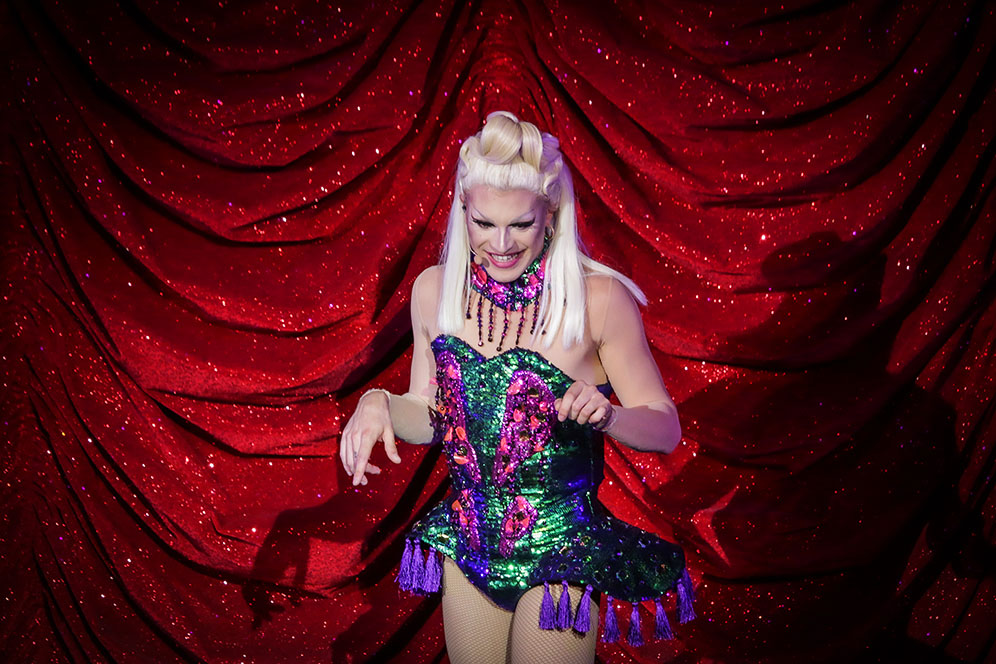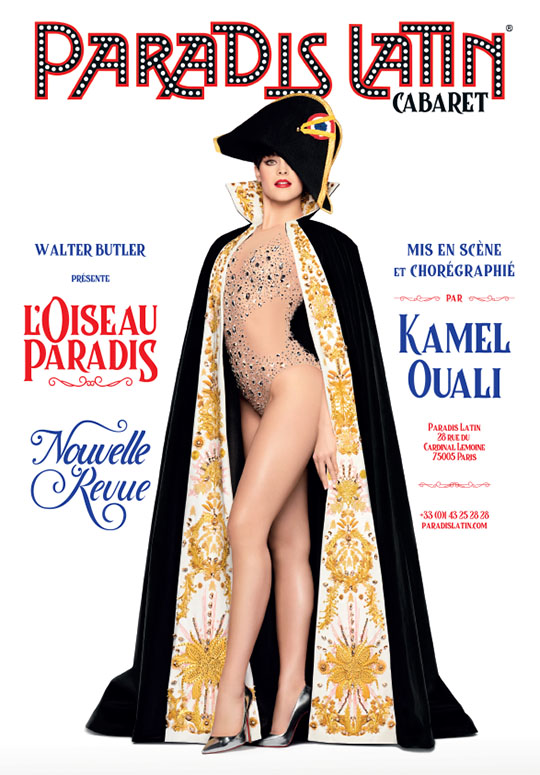- Home
- /
- Drag cabaret
The drag cabaret
The art of becoming someone else on stage
In the world of entertainment, men have been dressing up as women for a long time, either to replace them, initially, or to pay tribute to them, especially in the drag cabarets of Paris. The Paradis Latin tells you more about the art of drag, its history and its origins.

The ancient Greek theater, at the origin of drag
The art of drag has its origins in ancient times, when actors played a role of the opposite sex during theatrical performances. Indeed, in ancient Greece, women were not allowed to perform on stage. Therefore, men used masks, wigs and costumes to impersonate women. These accessories, which they changed during the performance, also enabled them to play several roles.
Female roles were also played by men in the 16th and 17th centuries, notably in the Elizabethan theater in England and Kabuki theater in Japan. These “female impersonators” can be considered the precursors of today’s drag performers.
The art of drag developed in Italy, from the 16th century, in the commedia dell’arte. This form of theater is based on stereotyped characters who are easily identifiable through disguises and exaggerated body language. However, in the commedia dell’arte, for the first time, the female roles were played by women!
Around the 19th century in Europe, female impersonation was performed primarily in mime shows, and more specifically in the pantomime, a form of British musical comedy that uses transvestism to induce laughter.
To have a 100% cabaret experience, discover L’Oiseau Paradis, the show of the Paradis Latin.
Paris, a major scene of drag cabaret
The art of drag developed considerably in the French capital during the 20th century. In 1948, an entertainment venue opened its doors in rue des Martyrs and became one of the most famous drag cabarets of post-war Paris. In 1956, an another drag cabaret was inaugurated in the same street. Around the 1970’s, drag performers also flourished in nightclubs such as the Palace.
Today, the art of drag refers to the process of getting into drag or into character in front of an audience. It requires skills in dressing up, makeup, singing, dancing and staging. In cabaret drag shows, the performers are often men who dress up to parody a famous female singer or personnality (such as Lady Gaga) and pay tribute to her. They differ from drag artists who do not imitate celebrities, and create their own character and style.


A cabaret show between tradition and modernity at the Paradis Latin
If you are looking for an exuberant and magical cabaret show in Paris, book your tickets for “L’Oiseau Paradis” at the Paradis Latin. Inaugurated by Napoleon in 1803, and rebuilt in 1889 by Gustave Eiffel, this venue experienced the golden age of cabaret in Paris.
Featuring 15 scenes, each one poetic, funny or sensual, and more than 500 costumes, “L’Oiseau Paradis” subtly multiplies allusions to traditional cabaret… and to the art of drag!



